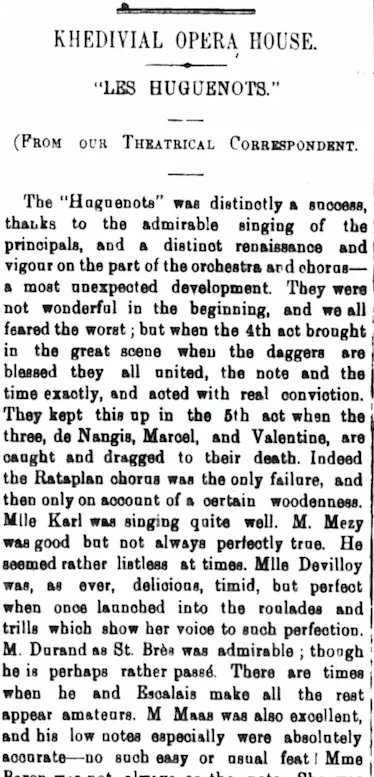Musical Theater
 January 7, 1907, page 3
January 7, 1907, page 3The musical theater correspondent surprised me with their knowledge of “Los Huguenots”. The editor well-articulated their points of the show, being critical but also giving a lot of praise. They begin with the overall thoughts, saying it began slowly, but within a little bit of time it picked up into a great show. The following paragraphs go deeper into the different performers and even the chorus. The editor praised all the performers on how well they sang, but nothing really on acting skill. They did go onto write the chorus was a failure of the performance, but did no effect the overall show.
I really felt as if I went to this show, hearing and visualizing the actors throughout. It was very surprising to me to see such good talent being exhibited during this time period, but also the critic who wrote the excerpt was impressive. I did not know that Egypt had such a well-rounded society with a variety of quality entertainment options. However, I do not think it is anywhere as good as what we are seeing during the present day. Today’s entertainment is a wide variety of genres, which means actors must have a wide variety of skills. One of the analysis projects titled, “The Exploration of Musicians in Alexandria” agrees with this as well. Ragland, the editor writes that most of the performers were amateurs, but were still greatly supported by the community. He goes on to say that there are no negative reviews that he can find, and the “Los Huguenots” review is no different. The editor does nothing but praise the performance. One last thing I found interesting in his analysis was he said the amount of musicians in the Egyptian Gazette was outstanding. He does not give them by specific name, but mentions the sheer number that are mentioned. I related this to my article because the editor brings up several performers, probably all of the performers from that show.